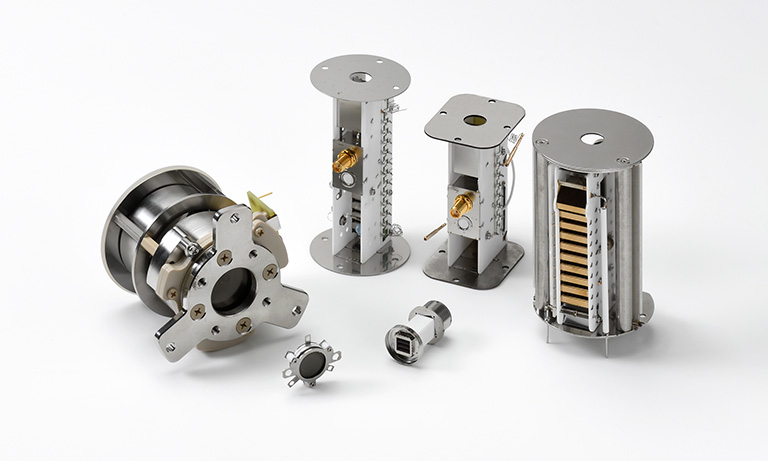United States (EN)
Select your region or country.

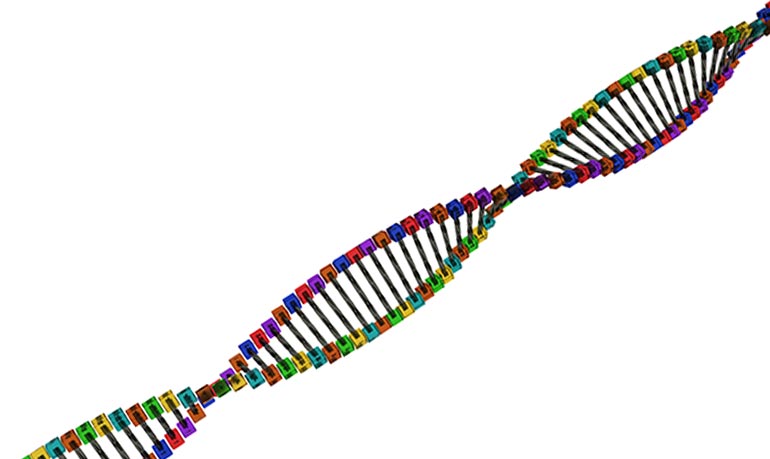
DNA sequencing
A DNA molecule is a polymer consisting of two long chains bound together and coiled in a helix. The chains are made of repeating segments, called nucleotides or bases, and labelled A, T, C, and G. The connections between the two chains are made through hydrogen bonds between complementary base pairs, A with T and C with G. A particular arrangement of the nucleotides contains genetic instructions for the growth, functioning, and reproduction of all living organisms. The variations of the code account for all diversity of life forms on Earth and endless distinctions of the members of a given species. No two humans are exactly the same, a fact known in forensic science where evidence based on the DNA is one of the strongest against a perpetrator. Ordering of nucleotides in the DNA – the DNA code – has become an essential analytical and diagnostic tool in numerous areas of biology, medicine, evolution, forensics, virology, and more. DNA sequencing refers to any technique of determining the sequence of nucleotides in DNA. For example, dye-terminator sequencing is one that uses light.
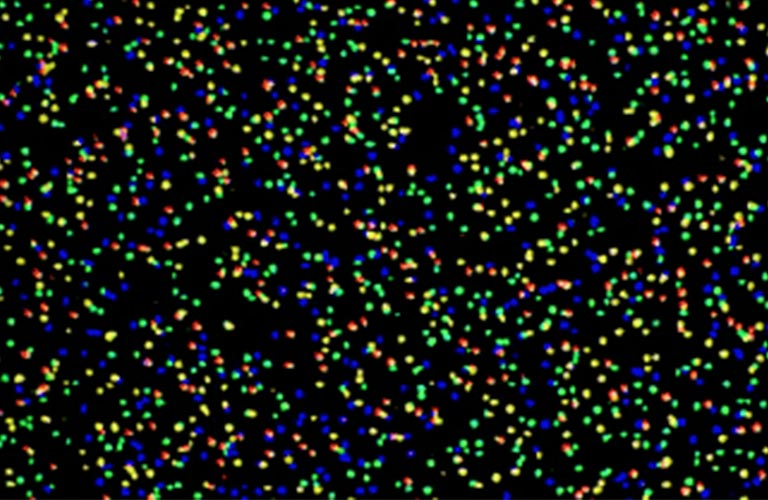
The first generation of DNA sequencing was the Sanger method, named after two-time Nobel Laureate Frederick Sanger. This was the method used to decipher the human genome in 2003. This process was gel-electrophoresis based and took over a decade to produce the first human genome sequence. In automated Sanger sequencing, a computer reads each band of the capillary gel, in order, using fluorescence to call the identity of each terminal nucleotide. More recently, higher throughput methods, known as next-gen sequencing (NGS) techniques, have replaced the majority of electrophoresis-based Sanger methods.
Most of these NGS techniques still employ light to determine the sequence of nucleotides. For example, in some variants of the dye-terminator model, fluorescently labeled nucleotides are cyclically added to build complementary strands from target DNA fragments immobilized on a surface. The process of building the new strand is called DNA polymerization, and the label serves as a reversible terminator so that only one nucleotide is added to the growing nucleic acid chain in each cycle. In the sequencing instrument, the fragments are illuminated by light from lasers, and the resulting fluorescence emission, at specific wavelengths that identify the terminating nucleotide, is detected by high-sensitivity cameras or other photodetectors. After the identification of the base pair, the terminator is cleaved, removing the fluorescence signal for that nucleotide and allowing the next terminating base to continue the polymerization in the subsequent cycle. Other popular optical DNA sequencing technologies include techniques that limit the volume of light detected to only the size of single nucleotides through tiny wells or pores.
For DNA sequencers, we offer a lineup of high-sensitivity image sensors and cameras that are optimal for detecting extremely weak light.
Recommended products
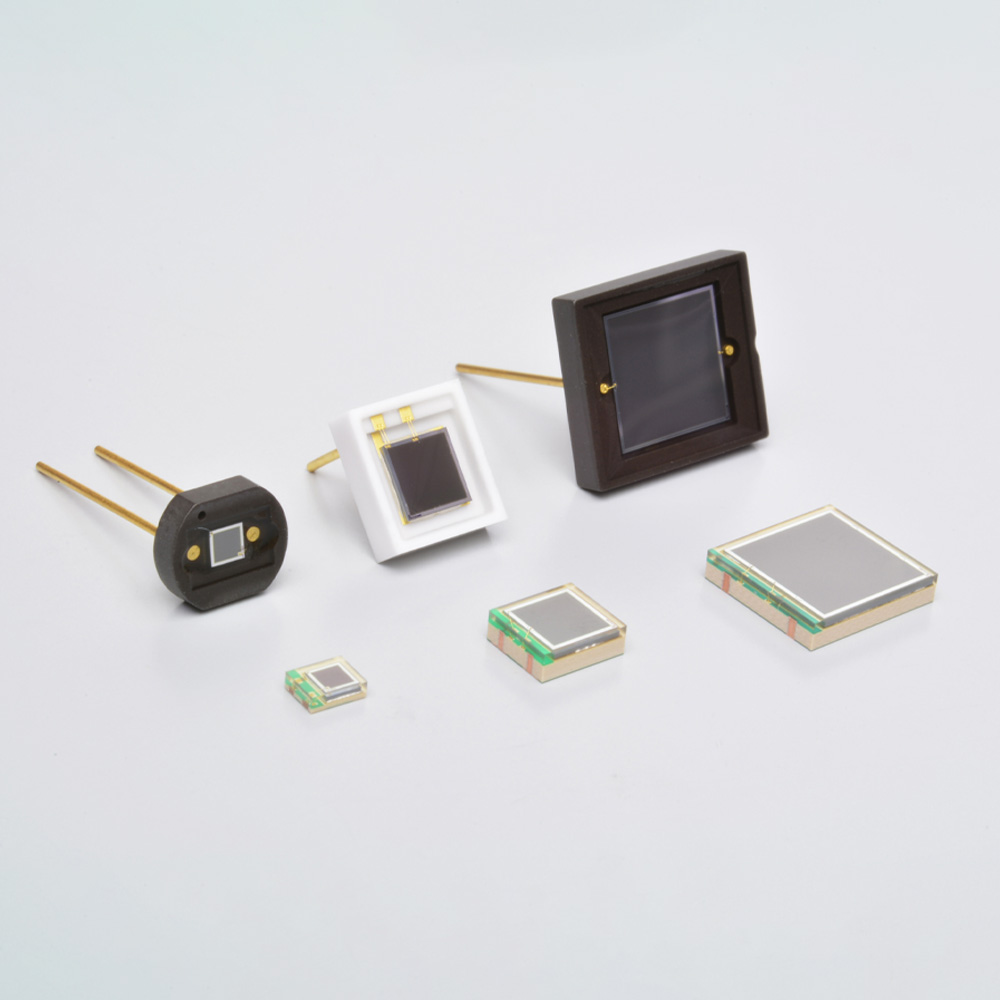
The S13360 series consists of MPPCs for precision measurement. The MPPCs inherit the superb low afterpulse characteristics of previous products and further provide lower crosstalk and lower dark count. They are suitable for precision measurement, such as DNA sequencing, that requires low noise characteristics.
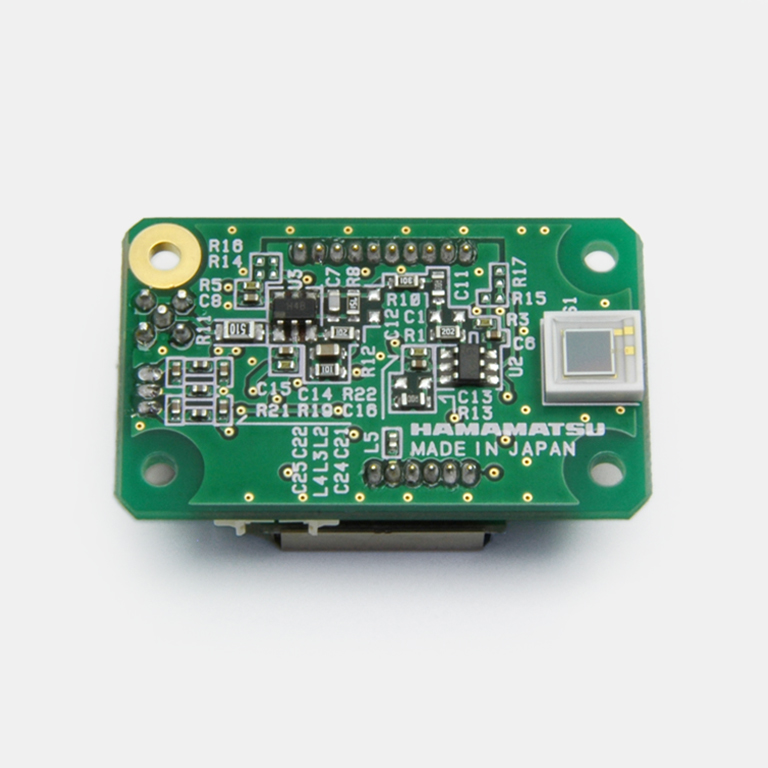
The C13365 series consists of optical measurement modules capable of detecting low level light.
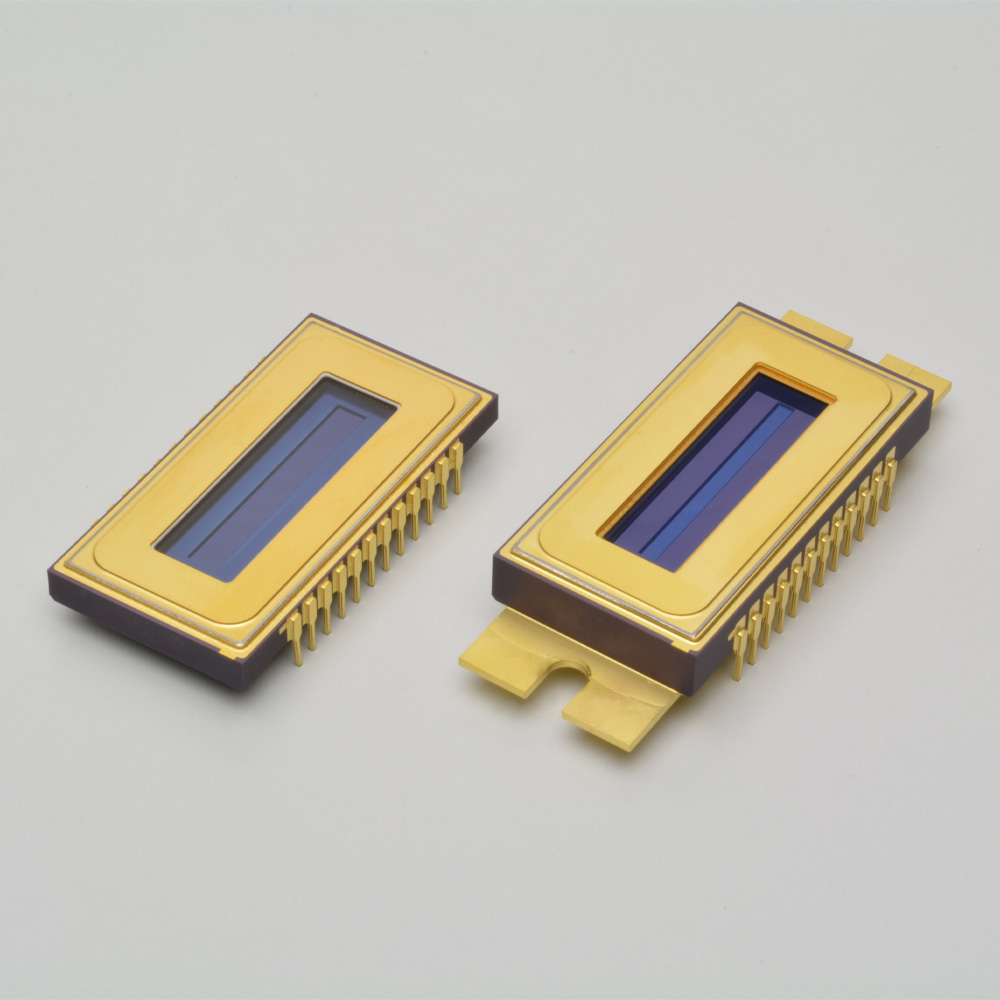
The S10140 and S10141 series (-01) are back-thinned FFT-CCD area image sensors developed for low-light-level detection.
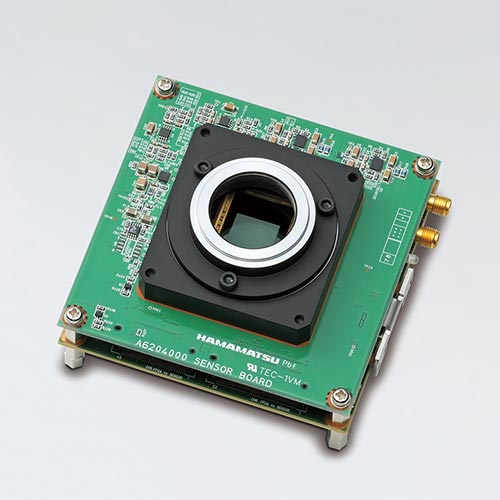
The C11440-52U30 is a compact and highly sensitive board level camera with the latest scientific CMOS sensor. We can also customize the product to best suit your needs.
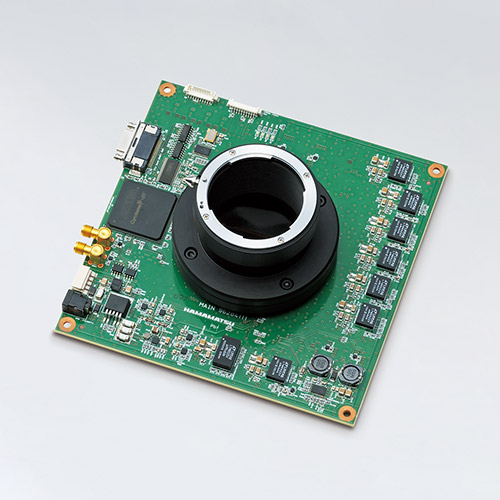
The C10000-A01 is a board camera enabling you to capture a wide range of images at higher speed and higher sensitivity. This is achieved by synchronizing the object motion with CCD charge transfer. This board camera is used for applications requiring high-speed detection of extremely weak light, such as analyzers and imaging devices.
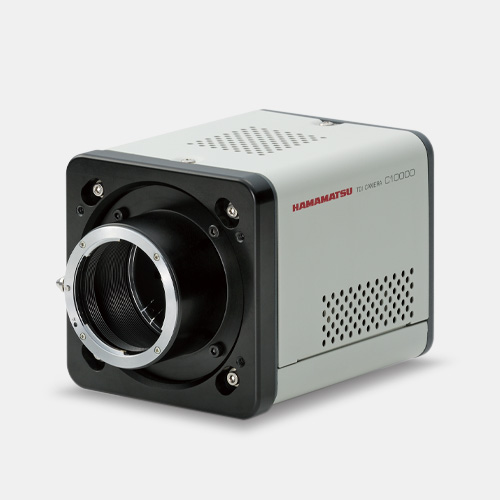
The C10000-801 is a camera enabling you to capture a wide range of images at higher speed and higher sensitivity. This is achieved by synchronizing the object motion with CCD charge transfer. This camera is used for applications requiring high-speed detection of extremely weak light, such as analyzers and imaging devices.
Scientific CMOS cameras
These CMOS cameras feature high sensitivity and low noise levels, making them optimal for observing extremely weak light. We can also customize the product to best suit your needs.
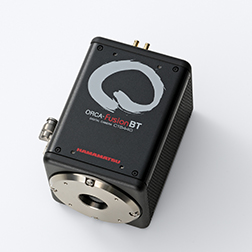
The ORCA-Fusion BT is performance without compromise. This camera hits an imaging sweet-spot regarding resolution, speed, and back-thinned quantitative low noise low-light performance at 60x & 100x. Our patented lighsheet readout modes meet the needs of the most demanding applications.
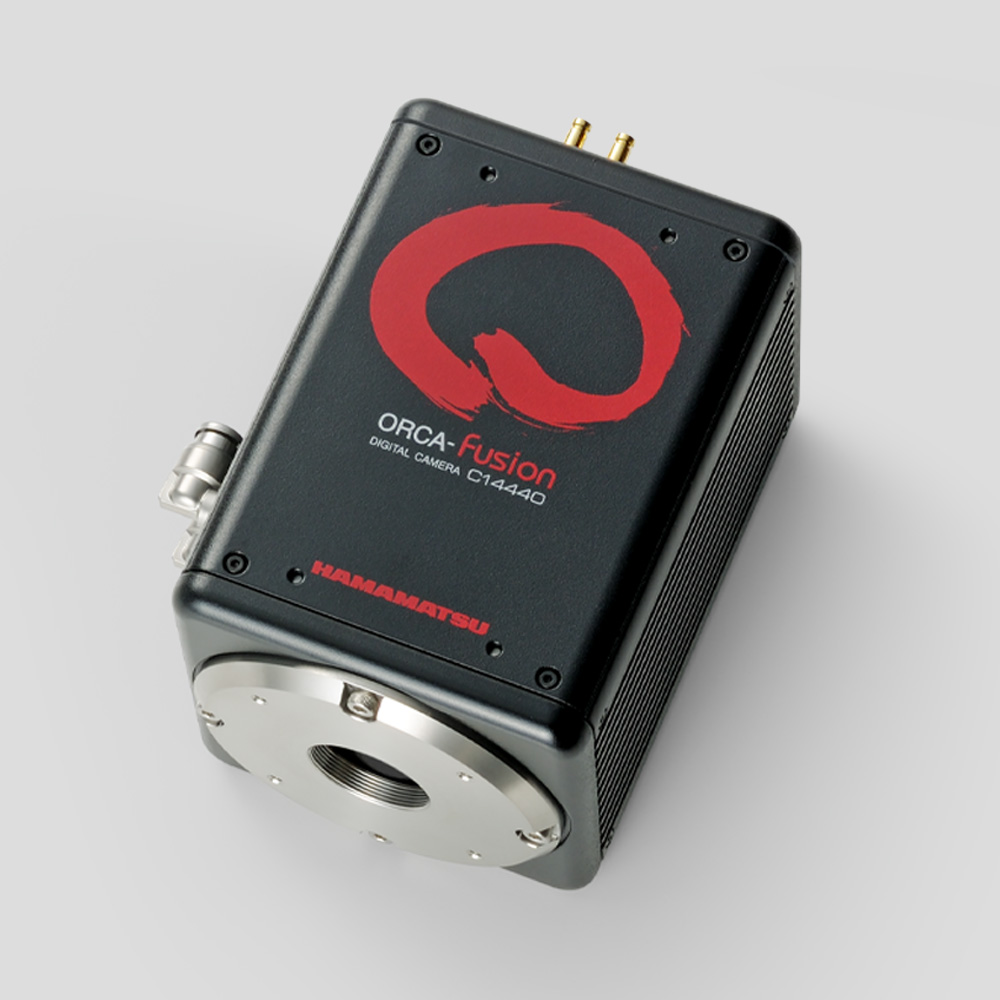
The ORCA-Fusion personifies robust quantitative versatility. It’s optimized for low-light performance and affordability. Imaging at 60-100x? You will be impressed.
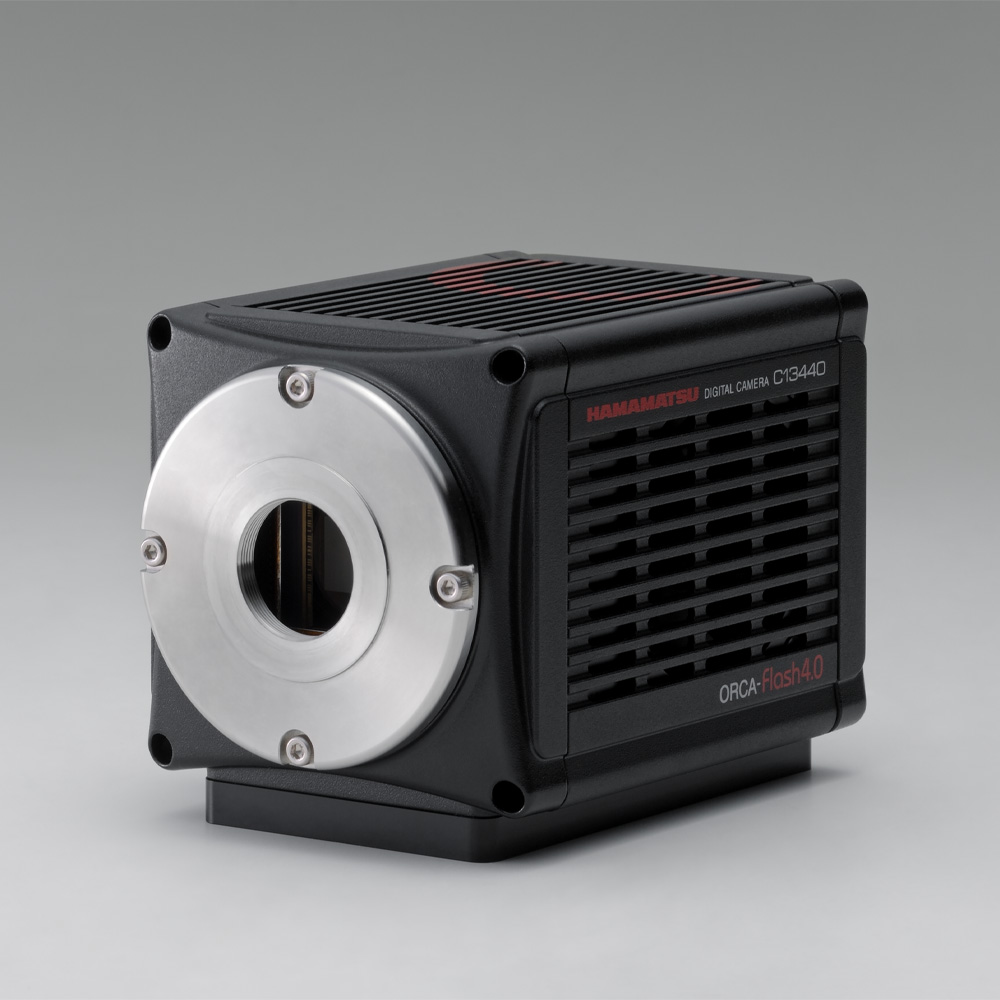
The ORCA-Flash4.0 V3 delivers reliable performance. For standard brightness specimens it will do very well, but for super low-light applications the lower noise of the Fusions, Quest2, and Fire may be more appropriate. If you are looking for quality & performance, on a budget, consider a Flash4.0 V3; it’s been popular in labs for over a decade of research.
- Confirmation
-
It looks like you're in the . If this is not your location, please select the correct region or country below.
You're headed to Hamamatsu Photonics website for US (English). If you want to view an other country's site, the optimized information will be provided by selecting options below.
In order to use this website comfortably, we use cookies. For cookie details please see our cookie policy.
- Cookie Policy
-
This website or its third-party tools use cookies, which are necessary to its functioning and required to achieve the purposes illustrated in this cookie policy. By closing the cookie warning banner, scrolling the page, clicking a link or continuing to browse otherwise, you agree to the use of cookies.
Hamamatsu uses cookies in order to enhance your experience on our website and ensure that our website functions.
You can visit this page at any time to learn more about cookies, get the most up to date information on how we use cookies and manage your cookie settings. We will not use cookies for any purpose other than the ones stated, but please note that we reserve the right to update our cookies.
1. What are cookies?
For modern websites to work according to visitor’s expectations, they need to collect certain basic information about visitors. To do this, a site will create small text files which are placed on visitor’s devices (computer or mobile) - these files are known as cookies when you access a website. Cookies are used in order to make websites function and work efficiently. Cookies are uniquely assigned to each visitor and can only be read by a web server in the domain that issued the cookie to the visitor. Cookies cannot be used to run programs or deliver viruses to a visitor’s device.
Cookies do various jobs which make the visitor’s experience of the internet much smoother and more interactive. For instance, cookies are used to remember the visitor’s preferences on sites they visit often, to remember language preference and to help navigate between pages more efficiently. Much, though not all, of the data collected is anonymous, though some of it is designed to detect browsing patterns and approximate geographical location to improve the visitor experience.
Certain type of cookies may require the data subject’s consent before storing them on the computer.
2. What are the different types of cookies?
This website uses two types of cookies:
- First party cookies. For our website, the first party cookies are controlled and maintained by Hamamatsu. No other parties have access to these cookies.
- Third party cookies. These cookies are implemented by organizations outside Hamamatsu. We do not have access to the data in these cookies, but we use these cookies to improve the overall website experience.
3. How do we use cookies?
This website uses cookies for following purposes:
- Certain cookies are necessary for our website to function. These are strictly necessary cookies and are required to enable website access, support navigation or provide relevant content. These cookies direct you to the correct region or country, and support security and ecommerce. Strictly necessary cookies also enforce your privacy preferences. Without these strictly necessary cookies, much of our website will not function.
- Analytics cookies are used to track website usage. This data enables us to improve our website usability, performance and website administration. In our analytics cookies, we do not store any personal identifying information.
- Functionality cookies. These are used to recognize you when you return to our website. This enables us to personalize our content for you, greet you by name and remember your preferences (for example, your choice of language or region).
- These cookies record your visit to our website, the pages you have visited and the links you have followed. We will use this information to make our website and the advertising displayed on it more relevant to your interests. We may also share this information with third parties for this purpose.
Cookies help us help you. Through the use of cookies, we learn what is important to our visitors and we develop and enhance website content and functionality to support your experience. Much of our website can be accessed if cookies are disabled, however certain website functions may not work. And, we believe your current and future visits will be enhanced if cookies are enabled.
4. Which cookies do we use?
There are two ways to manage cookie preferences.
- You can set your cookie preferences on your device or in your browser.
- You can set your cookie preferences at the website level.
If you don’t want to receive cookies, you can modify your browser so that it notifies you when cookies are sent to it or you can refuse cookies altogether. You can also delete cookies that have already been set.
If you wish to restrict or block web browser cookies which are set on your device then you can do this through your browser settings; the Help function within your browser should tell you how. Alternatively, you may wish to visit www.aboutcookies.org, which contains comprehensive information on how to do this on a wide variety of desktop browsers.
5. What are Internet tags and how do we use them with cookies?
Occasionally, we may use internet tags (also known as action tags, single-pixel GIFs, clear GIFs, invisible GIFs and 1-by-1 GIFs) at this site and may deploy these tags/cookies through a third-party advertising partner or a web analytical service partner which may be located and store the respective information (including your IP-address) in a foreign country. These tags/cookies are placed on both online advertisements that bring users to this site and on different pages of this site. We use this technology to measure the visitors' responses to our sites and the effectiveness of our advertising campaigns (including how many times a page is opened and which information is consulted) as well as to evaluate your use of this website. The third-party partner or the web analytical service partner may be able to collect data about visitors to our and other sites because of these internet tags/cookies, may compose reports regarding the website’s activity for us and may provide further services which are related to the use of the website and the internet. They may provide such information to other parties if there is a legal requirement that they do so, or if they hire the other parties to process information on their behalf.
If you would like more information about web tags and cookies associated with on-line advertising or to opt-out of third-party collection of this information, please visit the Network Advertising Initiative website http://www.networkadvertising.org.
6. Analytics and Advertisement Cookies
We use third-party cookies (such as Google Analytics) to track visitors on our website, to get reports about how visitors use the website and to inform, optimize and serve ads based on someone's past visits to our website.
You may opt-out of Google Analytics cookies by the websites provided by Google:
https://tools.google.com/dlpage/gaoptout?hl=en
As provided in this Privacy Policy (Article 5), you can learn more about opt-out cookies by the website provided by Network Advertising Initiative:
http://www.networkadvertising.org
We inform you that in such case you will not be able to wholly use all functions of our website.
Close











